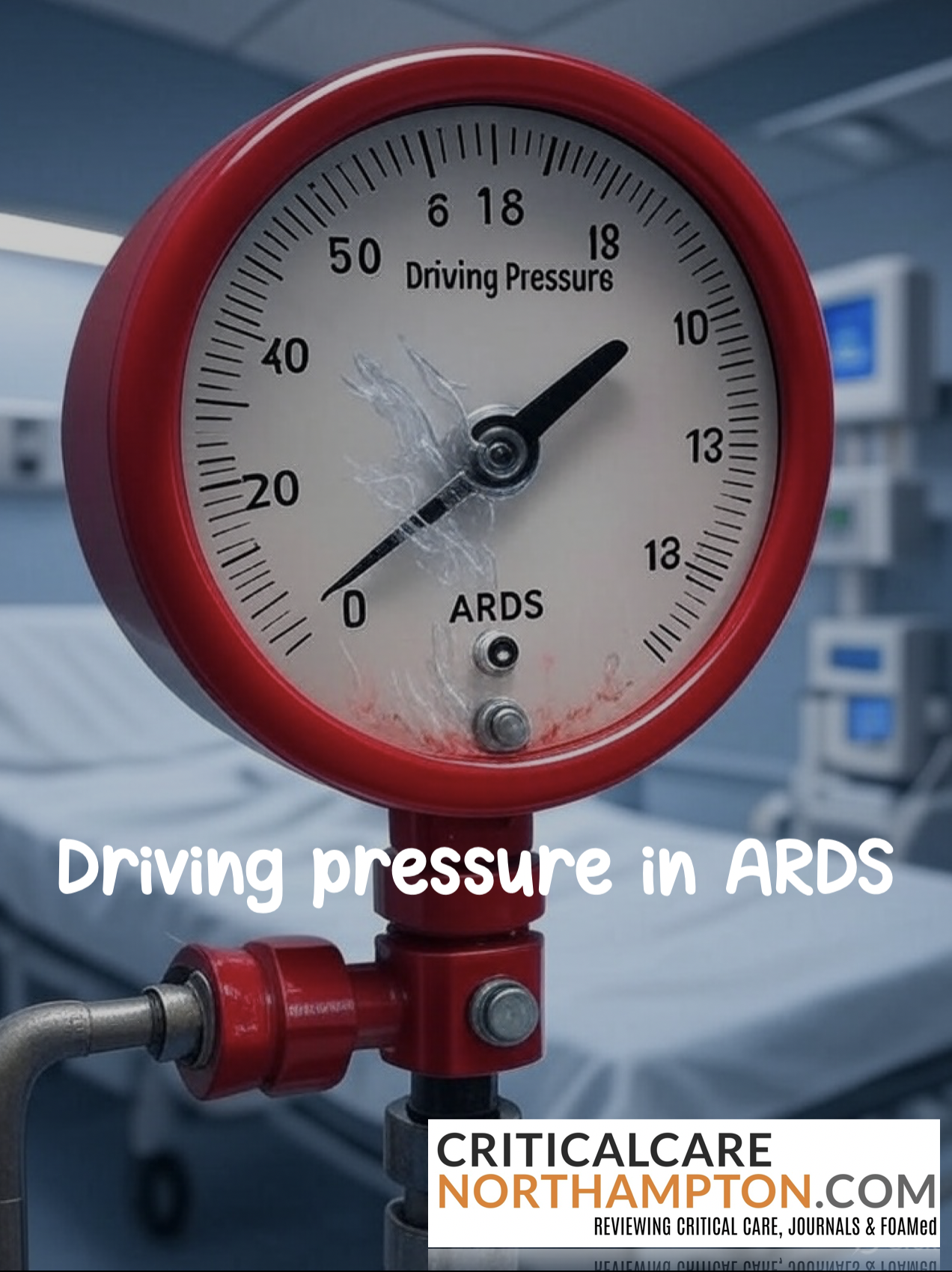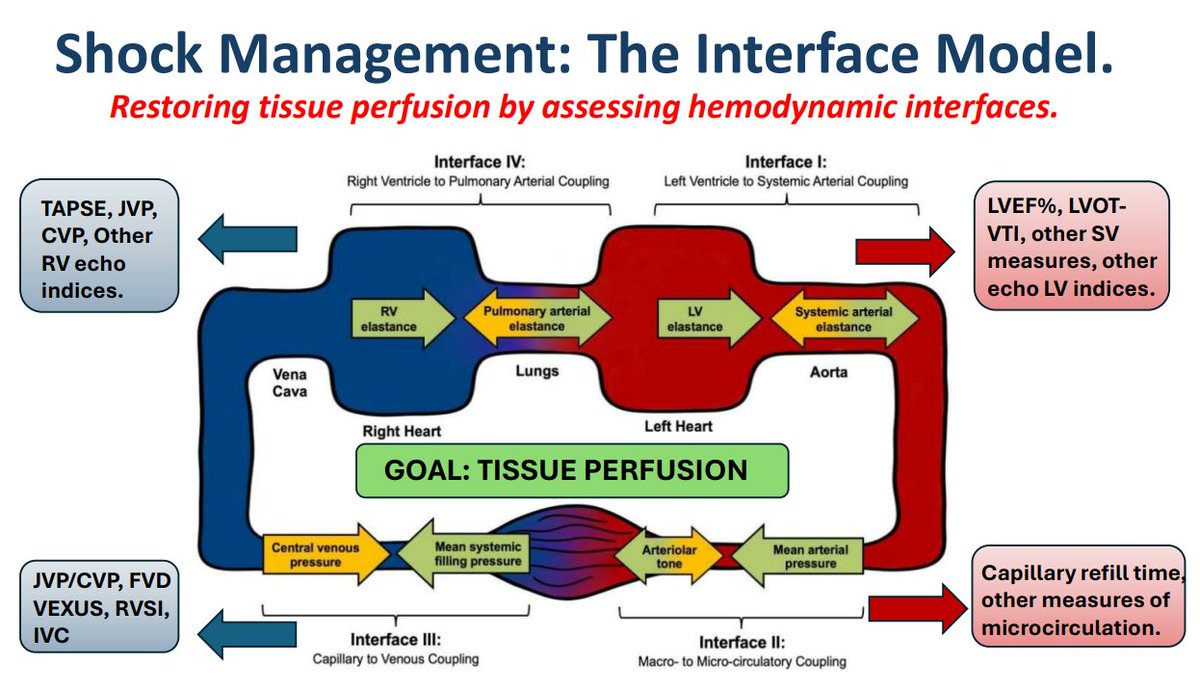What was it?
Secondary analysis of individual patient data from multiple randomized controlled trials evaluating the association between driving pressure (ΔP = plateau pressure minus positive end-expiratory pressure) and survival in patients with acute respiratory distress syndrome (ARDS) receiving mechanical ventilation.
The Devil in the Details!
- Data from 3562 patients with ARDS across nine randomized trials were analyzed.
- The study aimed to assess whether driving pressure (ΔP) was independently associated with mortality, compared to other ventilatory parameters like tidal volume, plateau pressure, and PEEP.
- Outcomes included hospital mortality (primary) and ventilator-free days.
The Results!
- Higher driving pressure was strongly associated with increased hospital mortality (adjusted relative risk, 1.06 per cm H₂O increase; 95% CI, 1.05–1.07).
- Driving pressure was a better predictor of mortality than tidal volume or plateau pressure alone.
- No significant interaction between driving pressure and other ventilatory strategies (e.g., high vs. low PEEP) in affecting mortality.
- Lower driving pressure was associated with more ventilator-free days.
They concluded
Driving pressure is a key ventilatory parameter associated with survival in ARDS patients, suggesting that strategies targeting lower driving pressure (e.g., through optimized tidal volume and PEEP) could improve outcomes.
Gripe Point Summary!
The study provides compelling evidence for the role of driving pressure in ARDS management but:
- Relies on secondary analysis, limiting causal inferences.
- Heterogeneous trial designs and patient populations across included studies.
- Limited data on long-term outcomes beyond hospital mortality.
- Potential confounding from unmeasured variables (e.g., patient comorbidities, specific ARDS etiologies).
- Lack of standardization in how driving pressure was measured across trials (e.g., timing, frequency, or ventilator settings).
- No assessment of the feasibility of routinely measuring driving pressure in clinical practice, particularly in resource-limited settings.
- Limited exploration of subgroups (e.g., by ARDS severity or etiology), which could reveal differential effects of driving pressure.
- Overemphasis on driving pressure may overshadow other important factors, such as fluid management or underlying infection control.
Our Summary
In patients with ARDS receiving mechanical ventilation, higher driving pressure was independently associated with increased hospital mortality (RR, 1.06 per cm H₂O) and fewer ventilator-free days. This suggests that driving pressure is a critical target for ventilatory strategies, potentially more important than tidal volume or plateau pressure alone.
Who’s worked on this before?
CCN’s Reflection
The MINT trial is a robust effort to address a critical question in the management of acute MI with anemia, offering the largest dataset to date with 3,504 patients. Its multicenter design and pragmatic approach enhance its clinical relevance. However, the open-label design, non-significant primary outcome, and short follow-up period temper its impact. The suggestion of potential harm from a restrictive strategy in type 1 MI and CKD patients is concerning but inconclusive, highlighting the need for further research. While the trial moves the needle toward questioning restrictive transfusion practices, it’s not a game-changer yet. Larger, blinded trials with longer follow-up and subgroup-specific analyses are essential to refine transfusion strategies in this complex population. Stay tuned for more clarity on this high-stakes dilemma
Written by Jakir Hossain
Peer review by JW.










